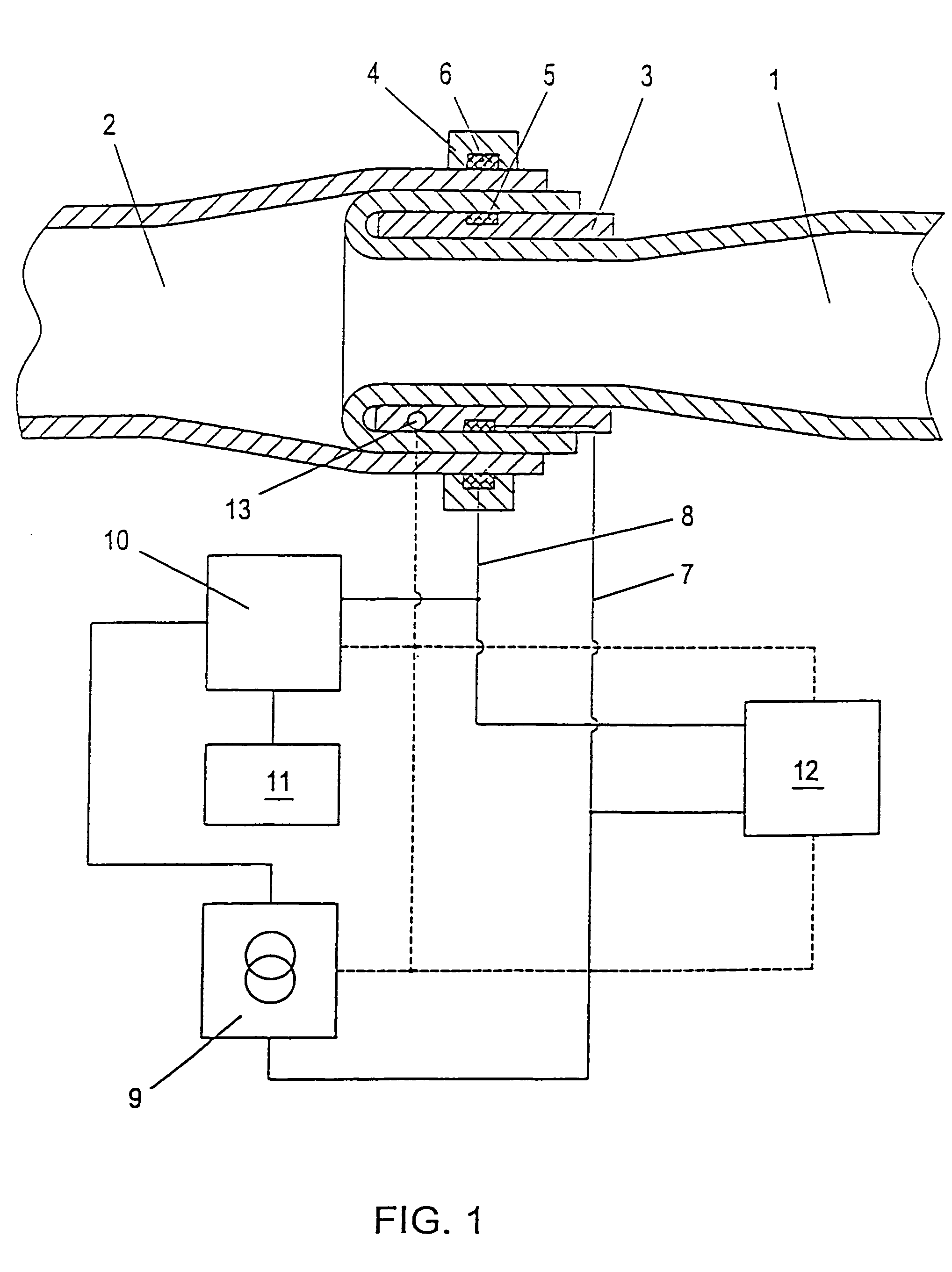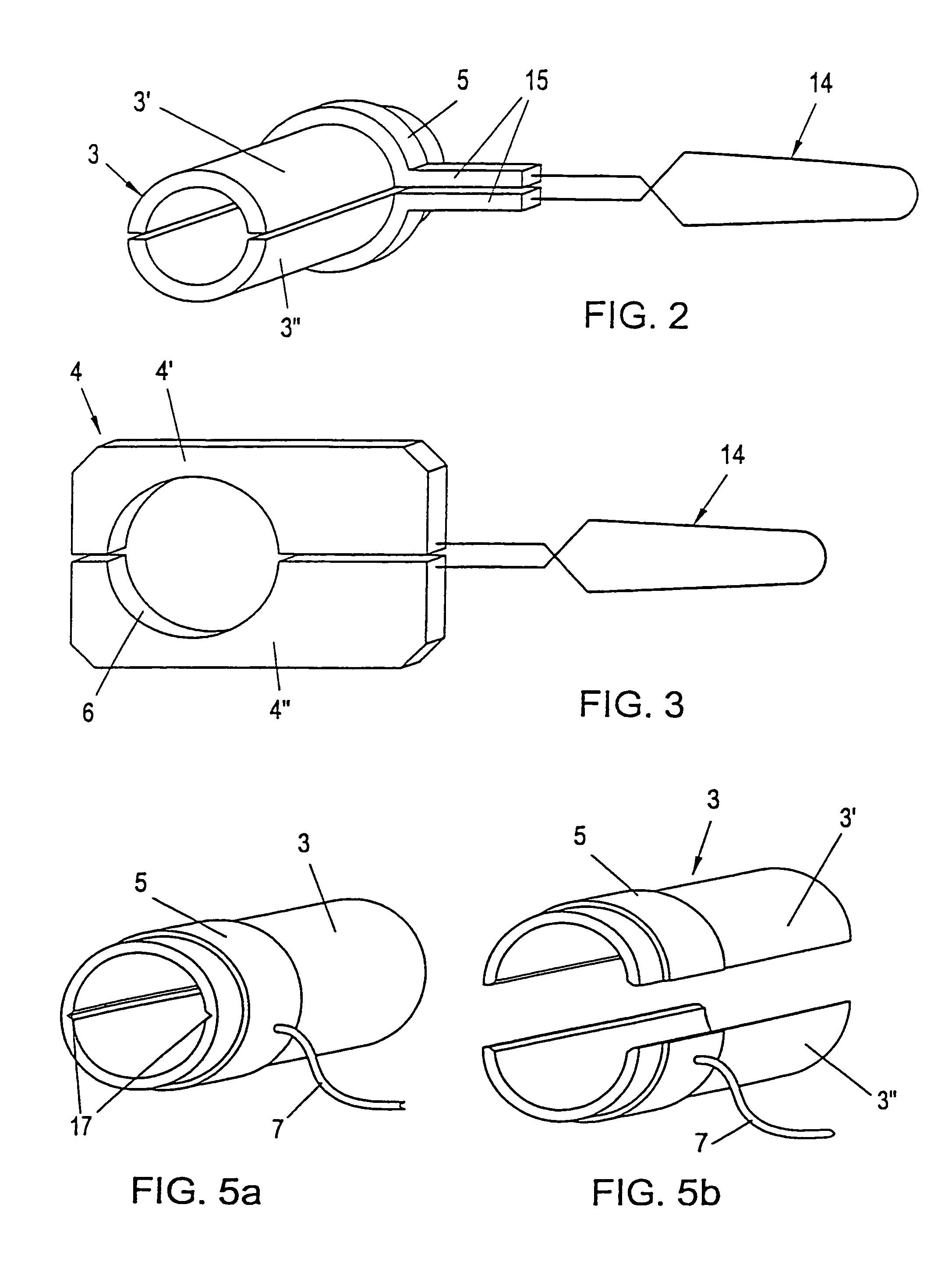Device for the production of anastomoses between hollow organs
an anastomose and hollow organ technology, applied in the field of hollow organ anastomose production devices, can solve the problems of not being recommended, thrombogenic and toxic adhesives, frequent complications in the region of sutures, etc., and achieve the effect of avoiding the disadvantages of the state of the art and the lowest possible risk of thrombosis
- Summary
- Abstract
- Description
- Claims
- Application Information
AI Technical Summary
Benefits of technology
Problems solved by technology
Method used
Image
Examples
Embodiment Construction
[0034]FIG. 1 shows a cross section through an end-to-end anastomosis of two hollow organs 1, 2, for example two arteries. Over the end of the hollow organ 1 a sleeve 3 has been pushed, and the end of the hollow organ 1 has been folded back over this sleeve 3. Then the end of the hollow organ 2 to be connected thereto is pushed over the inverted end of the first hollow organ 1, which now encloses the inner sleeve 3, and finally the outer sleeve 4 is placed over the inner sleeve 3. So that the sleeves 3, 4 can be removed after anastomosis is complete, each is designed to be separable. In accordance with the invention the inner sleeve 3 and the outer sleeve 4 both incorporate electrically conductive material, which preferably takes the form of corresponding contact surfaces 5, 6 in the sleeves 3, 4. It is likewise possible for the sleeves 3, 4 as a whole to be made of electrically conductive material. The contact surfaces 5, 6 are preferably disposed circumferentially around the sleeve...
PUM
 Login to View More
Login to View More Abstract
Description
Claims
Application Information
 Login to View More
Login to View More - R&D
- Intellectual Property
- Life Sciences
- Materials
- Tech Scout
- Unparalleled Data Quality
- Higher Quality Content
- 60% Fewer Hallucinations
Browse by: Latest US Patents, China's latest patents, Technical Efficacy Thesaurus, Application Domain, Technology Topic, Popular Technical Reports.
© 2025 PatSnap. All rights reserved.Legal|Privacy policy|Modern Slavery Act Transparency Statement|Sitemap|About US| Contact US: help@patsnap.com



